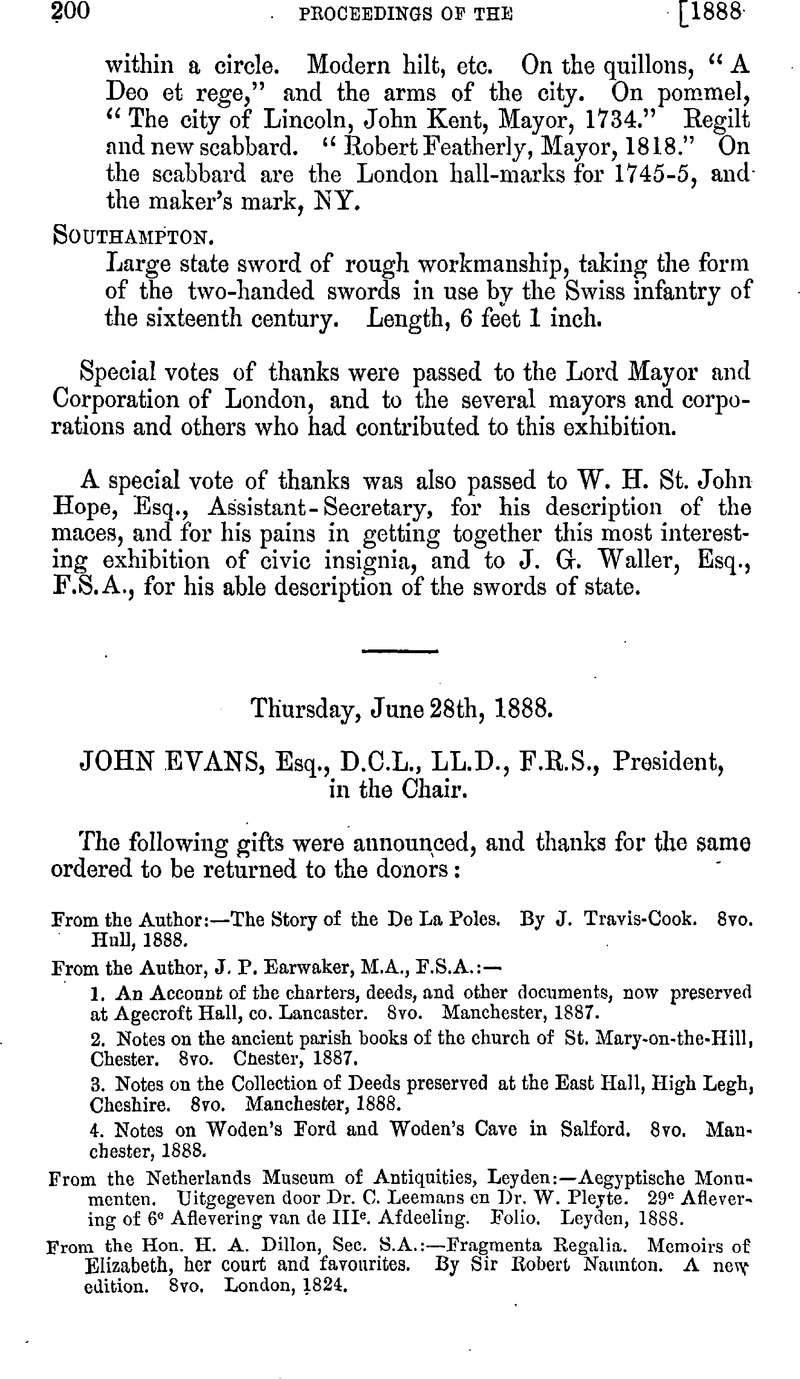No CrossRef data available.
Article contents
Thursday, June 28th, 1888
Published online by Cambridge University Press: 10 May 2010
Abstract

- Type
- Proceedings
- Information
- Copyright
- Copyright © The Society of Antiquaries of London 1889
References
page 202 note * See Archaeological Journal, iii. 333, for a valuable paper by the late Albert Way, Esq., F.S.A., on the subject of this and other sets of trenchers.
page 209 note * On four short scrolls round, enclosing alternately a rose and a pomegranate.
page 210 note * On four short scrolls enclosing respectively a marguerite or daisy, and a promegranate dimidiating a rose.
page 214 note * On four small folded scrolls, each enclosing alternately a rose and pomegranate dimidiated, anil a marguerite or daisy.
page 215 note * On four small scrolls, enclosing alternately a daisy, and a rose dimidiating a pomegranate.
page 218 note * This verse has been slovenly rewritten. The trencher belongs to a distinct set, and has the same floral border as III.
page 218 note † This trencher is all that remains of u separate set, with borders of unusual design.
page 223 note * See Proc. 2nd S. x. 207, where also much interesting matter on the subject of trenchers is printed.
page 225 note * For an account of the Roman remains in this district, see Transactions of the Cumberland and Westmoreland Antiquarian and Archaeological Society, iii. 64 ; vii. 79–90 ; viii. 1.
page 225 note † Page 9.
page 225 note ‡ Vol. iv, pi. xi. fig. 5.
page 225 note § Since writing the above, I have had the pleasure of examining the valuable collection of Irish antiquities so generously exhibited at the Irish Exhibition by Mr. Kobert Day, F.S.A. In it I noticed a spear-head, practically identical in shape with the subject of this notice, but much smaller.




